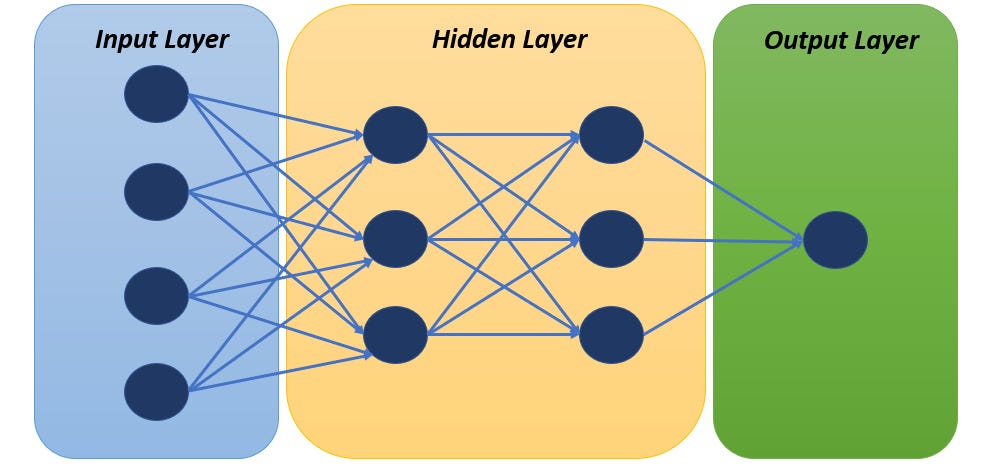Understanding The Layers of Neural Networks! #9
They are comparable to our body parts.
Layers are important components of a neural network. In this newsletter, we’ll try to understand the functions of different types of layers by comparing them with some of our body parts.
There are primarily three types of layers in a neural network: Input Layer, Hidden Layer and Output Layer.
Each layer has a specific purpose and helps the neural network learn, understand and process the information from the input data. Generally, there is one input layer, one output layer and the number of hidden layers can vary. Also, the number of neurons in each layer vary based on the neural network architecture we are considering for solving a specific problem.
A short description of each layer is given below:
Input Layer
This is the first layer in a neural network. It acts like the eyes of your neural network. It receives the initial input data. The number of neurons (nodes) in this layer is equal to the dimensionality (number of features) of input data.
Hidden Layer
This is an intermediate layer between input and output layer. It acts like the brain of your neural network. It receives input data from input layer, do some mathematical calculation and then send the information to the next layer. There can be multiple hidden layers in a neural network with different number of neurons which work together to recognize patterns in the data.
Output Layer
This is the last layer in a neural network. It acts like the mouth of your neural network. It provides the final answer or prediction. The number of neurons in an output layer varies based on the problem statement. If it is a binary classification problem, then there will be a single neuron. But if it is a multi-class classification problem, then the number of neurons will be equal to the number of classes to be predicted.
In summary, the number of neurons in input layer is determined by the dimensionality of input data while the number of neurons in output layer is determined by the nature of the problem or task at hand. The number and size (number of neurons) of hidden layers can vary and it plays a crucial role in the performance of a neural network while solving a problem.
Was this helpful to you?
Curious about a specific AI/ML topic? Let me know in comments.
Also, please share your feedbacks and suggestions. That will help me keep going.
See you next Friday!
-Kavita
Quote of the day
“Anyone who stops learning is old, whether at twenty or eighty. Anyone who keeps learning stays young.”
― Henry Ford
P.S. Let’s grow our tribe. Know someone who is curious to dive into ML and AI? Share this newsletter with them and invite them to be a part of this exciting learning journey.



Very good way to understand neural networks, it would be good to give a practical example with a real life case, greetings Max